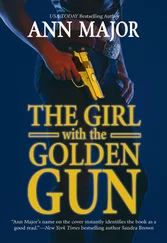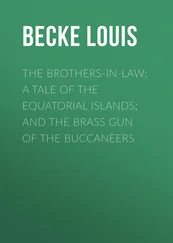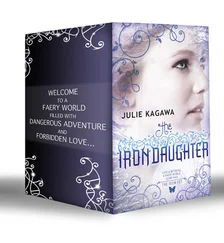Moritz won’t win any awards for sensitivity in journalism. Early on in the story, in an angry denunciation of the “slimebucket” lawyers who sued RG Industries out of business after the Reagan-Brady shootings, he wrote: “When John Hinckley shot James Brady, with an RG .22 revolver, his wife, Sarah, head spokesnut at Handgun Control, Inc., sued RG. She was offended that her husband was shot with a cheap, low-powered gun. I guess she wanted him to be shot with an expensive, high-powered gun.”
A writer for American Survival Guide even had nice things to say about S.W. Daniel’s Ladies’ Home Companion shotgun, the gun the Maryland state police ballistics expert refused even to test-fire. “When we first came across the Ladies’ Home Companion at a large gun show earlier this year, we found it a highly interesting and unique firearm,” the author wrote. He never commented on the inappropriate name of the weapon. The gun’s heavy trigger pull, he wrote, “makes the LHC a very safe gun.”
The Cobray M-11/9, Nicholas Elliot’s gun, gets its share of praise too. The Gun Digest Book of Assault Weapons included a chapter on the pistol and its heritage. The author described it as “a plinker’s delight and the bane of all tin cans, milk jugs, clay pigeons and other inanimate objects.” He saw its primary practical value as being home defense. “Appearance alone should cause most burglars and intruders to consider instant surrender if brought before its muzzle.”
In the closing paragraphs, the writer waxed nostalgic: “It is nice to know the Ingram family of submachine guns still is living and well. Because of their use on television and in the movies, they are justifiably famous.”
♦ ♦ ♦
America’s entertainment media provide the last ingredients to the perverse and lethal roux that sustains our gun culture. Today’s TV producers and movie directors have not only adopted and amplified the elemental messages of frontier myth—in particular the notion that only a gun can set you free—but so deified guns as to promote the use and proliferation of specific kinds of weapons. Just as McQ promoted the Ingram, so too Dirty Harry promoted the Smith & Wesson Model 29, and “Miami Vice”—in addition to also promoting the Ingram line—such assault weapons as the Uzi and Bren 10. Dr. Park Dietz, the La Jolla forensic psychiatrist, studied the effect of “Miami Vice” on gun prices and demand and found that the appearance of the Bren 10 in the hands of Sonny Crockett (Don Johnson) in the early episodes of the show immediately boosted demand for the weapon. Dietz has argued that “Miami Vice” by itself “was the major determinant of assault-gun fashion for the 1980s.”
Dr. Dietz told me he believes America’s news and entertainment media—its action movies, “reality” shows, news broadcasts, novels, and newspapers—play a far greater role in stimulating the country’s bloodlust than any other source, including underculture publishers like Paladin Press. “Nothing evil or disgusting known to man lacks a guidebook,” he told me. “But it’s not only Paladin producing them. Today Hollywood studios market more widely a more graphic version for the illiterate than Paladin would be capable of generating or selling. Whereas ten years ago someone wanting to know how to more effectively rob a bank or kill with poison or booby-trap a crack house would have to consult a more experienced offender or go to a library or bookstore, today they need merely turn on HBO. And so a lower intellectual grade of offender has been given access to what only those who could read or communicate had available in the past. That’s not Paladin’s doing. That’s Hollywood’s doing.”
Clearly, the role of movies and television in stimulating violence can never be quantified. Their impact, however, seems obvious. Consider how the phrase “Make my day” migrated from the movie Dirty Harry to car bumpers from coast to coast, even to a presidential speech, and, in slightly altered form, to the dialogue in a Disney “Duck Tales” cartoon. Recall too how sales of the Ingram submachine guns boomed after McQ , how Dirty Harry jolted sales of the Smith & Wesson Model 29. Add to this the American Psychological Association’s estimate that by the time a child finishes elementary school he will have watched eight thousand murders on television.
Early in 1993 I again visited the Frederick County gun show and, while loitering at a booth offering sawed-off shotguns, silencers, and submachine guns (including a MAC-10 for $595), listened in as a young boy peppered the dealer with questions. The image was pure Rockwell, but with a rather dark contemporary twist. The boy wore a baseball cap with the beak lifted high off his forehead. He had freckles and ruddy cheeks, and glasses that had slipped a bit down his nose. His jacket was new, and too big. Instead of trying out the stethoscope of some kindly Rockwellian doctor, he caressed the smooth metal finish of a Heckler & Koch submachine gun. He paused before a Barrett Firearms .50-caliber sniper rifle, which reared above the table on its bipod barrel rest. This was the gun Jim Moore had offered to show me in Las Vegas.
“Is this the same gun they used in the movie?” the boy asked the dealer.
“Right,” the dealer said. “ The Navy SEALs .”
The boy touched the rifle. “He used this to shoot through a building,” the boy said with the kind of reverence once reserved for home-run baseballs.
“You shoot this at a building, it’ll take off a pretty good piece,” the dealer agreed.
The boy pointed at the powerful scope mounted on the rifle. “And he used this to see through the building.”
The dealer kept a straight face.
The power of the entertainment media in fostering the appeal of guns became especially clear to me one afternoon when I and my daughters visited a video store in hopes of renting Peter Pan . My two-and-a-half-year-old was immediately distracted by an almost life-size cardboard cutout of Mel Gibson and Danny Glover in their Lethal Weapon roles, with Mel Gibson’s arm and his trademark Beretta extended into space. My daughter closed her hands around the Beretta, then pulled away, making her hands into the shape of a gun. She held them out before her in a position astonishingly like the isosceles combat stance used by police and their TV counterparts and, while imitating as best she could the sound of a gun, fired two pretend shots at her older sister. This was sibling rivalry, American style.
Our movies and TV shows do far more damage than simply boosting the appeal of weapons, however. They teach a uniquely American lesson: when a real man has a problem, he gets his gun. He slaps in a clip, he squints grimly into the hot noon sun, then does what he’s gotta do. The training begins early. In the summer of ’92, for example, I watched a TV commercial for the Super Soaker water gun, then the rage among pint-size assassins. The commercial offered a chilling parallel to the kind of real-life revenge killings carried out every day in the streets of America’s inner cities:
Two nerdy boys show up for a pool party at the home of a snooty preppy girl named Buffy. She shuts the door in their faces.
They return, however, this time dressed in black suit jackets, white shirts, black ties, black fedoras, and of course dark glasses, exactly like the Blues Brothers as portrayed by John Belushi and Dan Aykroyd, except that in place of black slacks the boys wear gaudy swim trunks. One boy solemnly opens a briefcase. His friend reaches in and pulls out the Super Soaker. “Oh, Buffeeee,” he calls in a mocking, nasal voice. She turns. He fires. Buffy is so shocked she spills her glass of punch over her face and torso.
Читать дальше
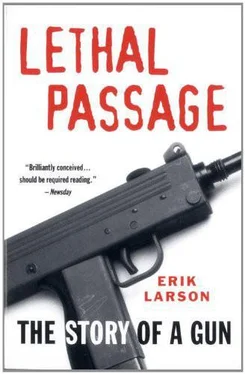
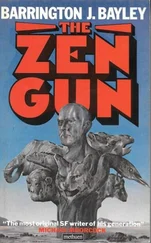
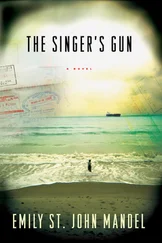

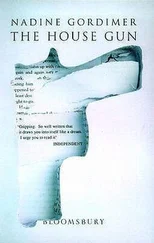

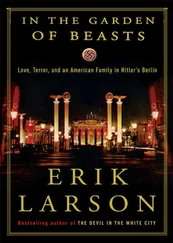

![Ричард Деминг - Whistle Past the Graveyard [= Give the Girl a Gun]](/books/412176/richard-deming-whistle-past-the-graveyard-give-t-thumb.webp)
